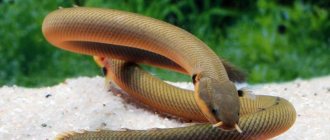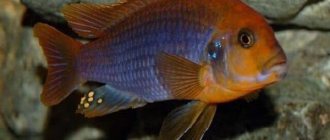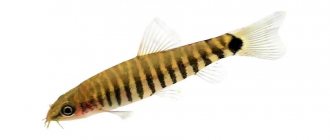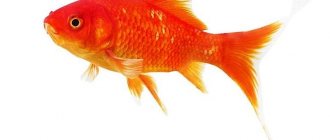The axolotl is an incredible, fabulous creature whose appearance resembles a prehistoric amphibian or newt. Because of such an extraordinary appearance, these individuals were nicknamed “water monsters” or “water dogs,” but not everything is so simple. An interesting fact is that it was the axolotl that turned out to be the prototype of the character of the popular cartoon “How to Train Your Dragon” - the dragon Toothless. Also, its original appearance inspired the creators of the image of the moon bee - Luntik. Axolotls are not only “terribly adorable”, but also unique - they are not a full-fledged animal - they are just a larva that never became an adult. What is this joke of nature, and what should future owners of this creature who decide to place such a miracle in their home aquarium need to know?
Description of individuals
Axolotl is not the name of a species of animal... In fact, these creatures are neotenic larvae of amphibians, most often of the Mexican or tiger variety of amphibians. The thing is that representatives of these species are more prone than others to neoteny, when the period of their development does not go through a full cycle, but individuals turn into adult specimens, remaining in the form of a larva, and at the same time can exist in this form.
Translated from Greek, “neoteny” sounds like “extended youth.” An amphibian, without undergoing metamorphosis, lives a long life cycle and is even capable of producing offspring. This feature is associated with the work of the animal’s “thyroid gland”. Surprisingly, if the larva is placed in other habitat conditions, the life cycle can be completed and it will turn into an adult ambystoma.
Externally, the axolotl resembles a fantastic dragon or an unusual toy - with a large head and gills sticking out. The description of the individuals is as follows:
- the body of the salamander, like that of adult representatives, has a head, torso and tail, the larvae do not have a bone corset, it consists of cartilage - fifty vertebrae, young individuals are especially soft;
- head – when compared with the body, it seems disproportionately large and expanded;
- the mouth is flattened, of a decent size, it seems that the axolotl is constantly smiling. The mouth contains tiny teeth, very sharp - individuals use them to hold prey, but they cannot tear food with them;
- eyes - tiny beads, black with a noticeable shine;
- gills - give amphibians a cosmic appearance, they look like pubescent branch-like shoots, extending from behind the head. Individuals are able to move them - press or shake them, clearing stuck debris;
- the body is narrowed, slightly flattened, streamlined in shape. There is a ridge-fin along the ridge; there are 16 grooves on the sides, due to which the newt looks “ringed”;
- skin – delicate, with a smooth surface;
- limbs - the axolotl has two pairs of legs, on the back - 5 fingers, on the front - one less;
- the tail is elongated, widened, makes up about 3/4 of the entire length; along its entire length there is a fin fold that extends from the back.
The size of the larvae varies from 15 to 30 cm, maximum weight is no more than 0.3 kg, girth is 13-20 cm. Males are larger than females and have a longer tail. There are quite large representatives (about 45 cm). If we talk about species differences, then the larvae of the Mexican Ambystoma have a flatter muzzle, a smooth body, and the color is not as variegated as that of the brindle.
Compatibility
Compatibility is an important issue in keeping any aquarium inhabitants, a question about which many copies have been broken, and axolotls are no exception. However, most owners keep them separately and for the following reasons.
Firstly , the external gills characteristic of axolotls make them vulnerable to attack by fish. Even calm and slow fish species cannot resist the temptation to try to bite them, and as a result, pitiful scraps remain of the luxurious shoots.
Secondly , axolotls are active at night and sleeping fish, in turn, become easy targets for them. It is almost impossible to find a middle ground between size (so that the fish does not get eaten) and aggressiveness (so that the axolotl itself does not suffer).
But there is an exception to every rule, which allows you to keep axolotls with fish. And this exception is goldfish. They are very slow, and if they are well fed, most will not even try to chase the axolotl.
Only a few will try, they will get a painful pinch and will stay away. Plus, keeping goldfish also requires low water temperatures, making them an ideal choice.
And yet, the safest way is to keep the axolotl separately, and one individual per aquarium. The fact is that they pose a danger to each other, young and small axolotls suffer from old and large ones and can lose limbs or even be eaten.
Overpopulation leads to the same consequences, when a larger individual kills a smaller one. It is very important to keep only individuals of equal size in a spacious aquarium.
Coloration of larvae
Mother Nature has not been stingy here either, so you can find creatures of various colors. The color of the larvae depends on the conditions in which they appeared - in nature or during artificial breeding, and on the quality of life. Axolotls are divided into three types based on color:
- "Naturalists" – black or dark (grayish, brown, brown, marsh-colored) individuals whose body is covered with spots. The pattern on the skin can be anything - in the form of a small, large, mesh-like pattern.
- White – are not albinos, the skin is uniformly light, and as the individual grows older, a patterned pattern appears on the back. There are not only pure white axolotls, but also pinkish, beige shades. The color of the gill petals is not red, but intense pink.
- Albinos – “albs” have no pigment, so they are completely whitish in color, there are no spots or patterns, the eyes and gill processes are bright red. Golden albinos are also found.
But these are not the only variations, since thanks to selection, axolotls with even more original colors were bred. Using GMOs, scientists were able to obtain individuals whose skin patterns begin to glow under fluorescent lamps.
Where to buy an axolotl
Always purchase from a reputable breeder or rescue group. It is best not to buy an axolotl online or from an ad unless you have spoken directly with the seller and they can provide you with adequate information about the animal.
If they can't provide you with detailed documentation about its origins and medical history, that's a red flag.
It is also ideal to talk to people who have purchased animals from this seller to find out about any problems. Additionally, your local exotic plant veterinarian can often refer you to a good breeder or assistance.
Expect to pay between $20 and $70 on average. Animals with rarer colorings, such as copper, tend to cost more.
A healthy axolotl will be active and will accept food if you offer it. His skin should not be flaky and his body should be somewhat plump (as opposed to underweight), although he should not have any abnormal tumors.
Lifestyle and behavioral characteristics
Axolotls have several respiratory systems - they can use gills, lungs or skin to breathe. In a clean aquatic environment, individuals breathe with gills; in a dirty, with poor aeration, they breathe with their lungs, and partial atrophy of the gills occurs. But if larvae with atrophied gills are placed in favorable conditions, their “twig” processes will grow again.
The larvae have incredible regenerative abilities. They can restore almost all lost parts of the body, this applies not only to the gill processes, but also to the limbs, fins, and some internal organs. But adult ambystoms do not have such an opportunity.
The axolotl moves jerkily, raking with its front paws. But they are not as mobile as land ambystomas; most often they lie quietly and move only as needed. Usually individuals can be found at the bottom of a reservoir, where they lie, slightly moving their tail, or “hang” in the water, imposingly moving their paws. Periodically, these water dragons move their “twigs,” shaking off dirt from them. If you knock on the side of the tank, the occupant will swim away without any fuss.
Regeneration is the dream of humanity
Another unique feature of the pink axolotl is the ability to regrow missing body parts. Nature gave this skill to the larva so that it would not be so vulnerable. Having lost his gills or part of his tail, the smiling dinosaur grows them back in record time. It takes a little longer to grow a new paw. The main condition is that the wound does not get infected. This rarely happens in the clear waters of Mexican lakes. Ironically, aquarium axolotls are much more likely to suffer damage. Instead of quickly restoring the lost body part, they die from blood poisoning.
Habitat
In nature, these amazing creatures are very rare. They are representatives of an endemic species, as they live only in 2 Mexican lakes located in the mountains at an altitude of more than 2000 meters above sea level - Cholco and Xochimailco. Here, the Aztecs once built “floating” islands – “chinampas”, on which today ornamental vegetation is grown.
Chinampas are well irrigated, so they and the canals between them are excellent habitats for axolotls and adult amphibians; here they live and reproduce, maintaining the population.
Aquarium keeping of axolotls
These unusual inhabitants found their way into the home tanks of domestic hobbyists and collectors back in the mid-19th century. As it turned out, axolotls are quite unpretentious; they reproduce well in captivity, are omnivores and do not require painstaking care. This arouses even more interest in them and increases their popularity.
In medical laboratories, axolotls were often used to study the regenerative abilities of tissues, so many individuals raised in captivity are laboratory animals.
Feeding
What does axolotl eat? It is enough to simply feed, since axolotls are predators and prefer animal food. The size and type of food depends on the individual, for example, they eat well sinking food for predatory fish, available in the form of granules or tablets.
In addition, the owners provide pieces of fish fillet, shrimp meat, chopped worms, mussel meat, frozen food, and live fish. True, the latter should be avoided, as they can carry diseases, and axolotls are very predisposed to them.
The feeding rules are the same as for fish - you cannot overfeed and leave waste in the aquarium, as such food immediately rots and instantly spoils the water.
Mammalian meat cannot be used as food, since the axolotl’s stomach cannot digest the protein contained in it.
A suitable home for an aquatic “monster”
As practice has shown, these creatures can not only exist in captivity, but also live for a long time, giving birth to offspring. Naturally, if only the owner provides him with suitable housing.
How many reptiles can you keep in one tank?
It is best to place only one individual in one tank - salamanders, especially those of different ages, do not get along well with each other. For example, seasoned, large males offend young brothers, even to the point of injuring and eating them. As a last resort, amphibians of the same age and size can be kept in one container.
Tank size
A 50-liter aquarium is suitable for 2 individuals. However, when they reach their maximum size, this volume will only be enough for one axolotl. So it’s better to immediately place a couple in a 100-liter container or prepare for the pets to soon move to spacious apartments.
Water requirements
Until the quality of the water approaches natural, it is not recommended to place newts in it. It must be clean, although these creatures are able to survive in a polluted environment. You should be careful when choosing a filter - powerful devices that work constantly will frighten the inhabitants. It is better to purchase an internal filtration system that contains a sorbent and creates a weak flow.
You should keep the tank clean by removing leftover food and changing the water by about a quarter 1-2 times a week. It is recommended to carry out a complete replacement no more than 3-4 times a year. Water temperature is very important for these creatures. Since in nature they live in high-mountain lakes with cool water, living in a warm water environment is detrimental for them. The indicator should be no lower than 13° and no higher than 20°C; when it increases, individuals become ill and even die.
To monitor temperature stability, it is recommended to equip the container with a thermometer. During hot periods, it is necessary to take care of cooling the aquatic environment; for example, you can place a container with frozen water in the aquarium and replace it periodically. If possible, a tank with amphibians can be placed in the basement.
Soil material
Salamanders need it because when moving they cling to it with their limbs. If the bottom turns out to be without soil, the inhabitants may become stressed and ulcerations may appear on their paws. The use of pebbles, gravel and sand is not recommended; axolotls often swallow them, which leads to problems with the gastrointestinal tract. It is best to cover the bottom with a layer of pebbles large enough so that their particles do not fit into the amphibian's mouth.
Decor
It should perform not only decorative functions, but also provide shelter for these creatures. The number of secluded places should be greater than the number of inhabitants, each larva should have a choice. It is important that objects do not have sharp corners that can injure the delicate skin of axolotls. You can decorate the aquarium with driftwood, houses and ceramic figurines, arches, clay pots, halves of coconuts, etc.
Suitable aquarium location and lighting
Do not place the tank in places where direct sunlight penetrates, or next to devices that make noise - computers, televisions, musical equipment. Axolotls are nocturnal inhabitants, so they do not need any lighting; they feel more comfortable in the dark.
Caring for pet dragons is not difficult - you need to feed them, clean their home once a week and maintain the temperature. If it becomes necessary to move your pet to another tank, you should use a soft fabric net and proceed carefully. We must not forget that the larvae consist of cartilaginous tissue.
How and what to feed the larvae with ambyst
In this regard, they are no different from other amphibians and are also predators, so it is best to feed them with live diets, for example, bloodworms, which can be purchased at a pet store. It is advisable for the owner to take into account the needs and characteristics of these amphibians:
- Individuals cannot be either starved - they become overly aggressive - or overfed - this negatively affects their health and water quality.
- In addition to bloodworms, they can feed on earthworms, chopped raw fish, mussels, small crustaceans, and insects without wings.
- In order for axolotls to be interested in prey that does not move, they will have to tinker - they are given to pets by hand or using tweezers.
- The menu can also include granules intended for feeding predatory fish. They slowly settle to the bottom, and predators manage to grab them at this moment.
- You cannot feed the larvae meat; their stomach is not designed to digest it.
- When feeding, you should take into account the visual characteristics of the “dragons” - they look only up, so they do not notice the food at the bottom. Anything that has settled must be removed from the tank immediately.
These creatures use their jaws to hold live prey, and then suck it in and swallow it whole, so adult individuals are fed no more than 2-3 times a week, so that what they eat has time to be digested.
Axolotls themselves do not know when to stop and can eat endlessly, “in reserve,” so it is important to control the size of portions and the frequency of feedings. In addition, they are so tenacious that they can endure even 2-3 week hunger strikes without tragedy.
Little tricks
For the axolotl, the purity of the water and its oxygen saturation are important, so the aquarium must be equipped with a compressor and cleaned at least once a week. The optimal water temperature is 15-20o. But the flow of larvae is annoying, so the compressor should not be too strong
nym. Axolotls do not like bright light, so it would be good to create shaded areas in the aquarium. As neighbors for them, it is better to select fish that are not small and not too lively - golden ones are great, but not veil ones.
An abrupt replacement of old water with fresh water, especially cold water, is a stimulus for axolotls to reproduce. From the eggs laid by the female on aquatic plants, after a couple of weeks of being kept in a separate container with water, larvae develop, which are fed with food for fish fry.
And lastly: if your axolotl suddenly changed its color and body shape and “threw back” its gills, it means that it has turned into an ambistoma. This happens when the water level drops significantly or when the special hormone thyroidin gets into the food. There is nothing wrong with this, it’s just that you will now have a different pet living with you.
Features of reproduction
It is not difficult to obtain offspring of aquatic dogs in aquarium conditions. And to distinguish the sex of individuals, it is enough to look at their cloaca - in the male it is convex, as if swollen. Females look thicker and wider in girth. The larvae reach sexual maturity at 10-11 months of age. The signal for individuals to mate is a change in temperature – a slight increase in the indicator and a decrease in lighting. These conditions can be provided to the larvae, regardless of the season.
If the owner plans to breed pets, then it is recommended to separate the couple from each other for several days, while providing them with a decrease in temperature to 10-12 degrees and a meager diet. And then they are placed in a tank with water having a temperature of about 18°C, and the following is expected:
- the male begins to perform a mating ritual, for which he will need free space;
- he begins to release the seed in the form of clots, and the female lays unfertilized eggs on them and, using the cloaca, absorbs the seminal fluid with eggs;
- 18-30 hours after this, the female hangs eggs on leaves of vegetation and other objects;
- as soon as spawning is completed, the “father” should be removed from the tank, since he will not disdain to feast on his own offspring;
- the water temperature in the aquarium should be moderate - 20°-21°C;
- You should periodically remove unhealthy - whitish or grayish - eggs;
- after 14-21 days, 2-centimeter pea-sized fry, resembling fish, appear from the eggs. Initially, babies do not have legs; the hind ones appear after 6-8 days, and the front ones only after 12 weeks.
At first, the offspring should be fed with ciliates, and then switched to daphnia, small bloodworms and special food for fry - 1/4 of the total diet. The water in which the fry live is changed every day, taking care to keep it clean.
The next insemination should be planned no earlier than 8 weeks after the previous one. But it is recommended to obtain axolotl offspring from one female no more than 3 times a year. It is useful for the male to inseminate eggs more often. The greatest fertility of individuals occurs at 2 years of age, but dragonets older than 6-7 years are not so successful in reproduction.
Basic aquarium parameters
The size of axolotls is quite impressive, so the recommended minimum aquarium volume is about 60-80 liters. In this case, the aquarium does not have to be full: the water level should be higher than the length of your pet. It is advisable to use a filter - otherwise frequent water changes are necessary. The filter should not create a strong current. It is necessary to regulate the power of the device so as not to damage the axolotl’s gills.
A siphon should be used to remove food residues from the bottom. A weekly 20% water change is also necessary. In aquariums without a filter, replacements of the same volume are necessary daily or every other day. A complete water change is unacceptable, as this can lead to a total imbalance in the aquarium. Tap water usually contains chlorine compounds. They can be neutralized using special preparations for aquarium water on the market. Optimal pH values are 6.5-7.5.
Who do these underwater inhabitants get along with?
Ambistoma larvae and aquarium fish cannot coexist in the same tank: axolotls will actively hunt small neighbors, and suffer from large ones - predators will attack them or tear their appendages. It will also not be possible to have a peaceful neighborhood with turtles and other aquatic inhabitants; the main reasons for this are incompatible nutrition and the likelihood of mutual aggression.
In addition, not all creatures can live in such a cool aquatic environment, and some representatives have common diseases. The only possible companions for axolotls are goldfish; they are too large to become food for newts and prefer to live in cool water.
Species status
These endemic animals live in nature only in Mexico, and then in extremely small numbers. In home aquariums they are distributed almost all over the world. The species is heading towards extinction due to natural conditions. The good news is that axolotls have taken root in aquariums, which means they are not in danger of becoming extinct.
For comparison, statistics: there are less than 1000 of these amphibians left in the wild. And in captivity there are more than 400 thousand. The decline in numbers is associated with human influence and changes in climate and biotope. Unfortunately, we must admit that axolotls are too fragile creatures to adapt to global changes in the environment.











